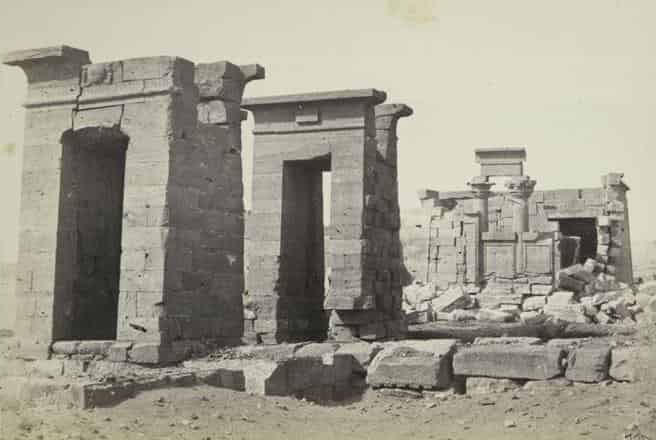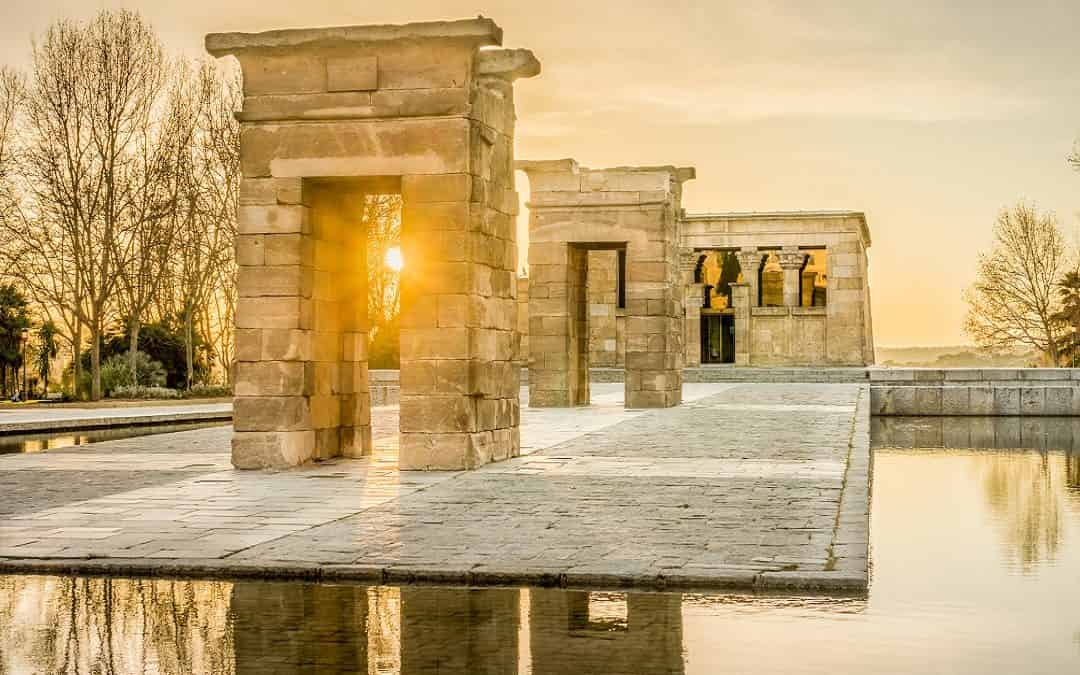It was known as the “country of gold.” Not surprisingly, the region of Nubia, located in the narrow corridor originated by the prolongation of Upper Egypt towards the mouth of the Nile, was one of the main sources of gold and raw materials (hides, ebony, ivory, incense …) of ancient Egypt.
One of its villages, Debod, (today between the first and second cataracts of the Nile), marked one of the natural limits of Egypt.
Right there, two millennia ago, Adikhalamani, king of Meroë, ordered to build a small temple in honor of Amun, father of all gods.
The fact that we can currently contemplate this monument in the Parque del Oeste in Madrid is the result of a long history, born of the will of some nations to conserve the world’s cultural heritage.
From Amun to Isis
Raised between 200 and 180 BC, the temple of Debod was a place of passage for pilgrims who traveled the sacred route to the great religious center dedicated to the goddess Isis on the nearby island of Philae.
The building was known as the “chapel of reliefs” due to the ritual scenes depicted on its walls. In them could be read proclamations such as “King Adikhalamani makes the monument to his father Amun” or “Amun who lives in Debod”, clear certificates of the reason for the temple, honoring Amun, “the hidden one”.
But the subsequent intervention of three kings of the Ptolemaic dynasty (Ptolemy VI Philometor, Ptolemy VIII Euergetes II and Ptolemy XII Neo Dionysus) was reorienting the cult of this sanctuary for the benefit of the goddess Isis, to which a new room added to the original core.
Later, after the annexation of Egypt to the Roman Empire, the emperors Augustus and Tiberius carried out further expansion works on the temple of Debod.
These include the construction of a pronaos (vestibule) with a colonnaded facade, with an access flanked by two other columns, and the decoration of its internal walls.
Some centuries later, between 535 and 537 AD, Emperor Justinian decreed the closure of the Egyptian temples –among them that of Debod–, one of his measures to Christianize the region.

Inevitable decay
The first modern reference to the temple of Debod corresponds to a brief description of the place made by the Danish Frederic-Louis Norden in 1737.
But the most extensive and detailed would be offered in 1813, by the Swiss explorer Johann Ludwig Burckhardt, who was sent to inspect the area by order of Napoleon Bonaparte.
Throughout the 19th century, the temple would continue to receive numerous visits from Westerners – among them that of the considered father of Egyptology, Jean-François Champollion.
They would allow to document the evolution of the deterioration of the temple, exacerbated in 1868 by the effect of a very strong earthquake.
In 1907, the construction of the first Aswan Dam (known as the Low Dam) was a serious setback for the temple: it would remain under water for eight to ten months a year, only being free in summer.
Its state of conservation was getting worse and worse: the sandstone, as well as the polychrome and some of its reliefs.
In view of its deterioration, the Egyptian Antiquities Service, led by the Egyptian architect Al Barsanti, carried out a first reconstruction of the sanctuary.
After the completion of the work, the German Günther Roeder carried out an exhaustive study with photographic documentation, plan drawings, elevations and comments.
His work continues to be, a century later, the main bibliographic reference of the Temple of Debod.
At the end of the fifties, Egypt planned the construction of a new and gigantic dam in the upper reaches of the Nile, capable of storing more than 150 million cubic meters of water.
Following the presentation of the project, the Egyptian government and UNESCO rushed to launch the so-called Nubian Campaign in April 1959. The monuments and archaeological sites of that region had to be safeguarded before they were submerged under water forever.
A year later, under the direction of Professor Martín Almagro Basch, the Spanish Committee was formed for the rescue of the archaeological treasures of Nubia.
Relocation
In 1961 the Debod temple was transferred stone by stone to the island of Elephantine, in front of the city of Aswan, and some excavations of the foundations of the construction and in the surroundings of the temple were carried out.
These works were directed by the Egyptian Antiquities Service, assisted by a Polish archaeological mission.
On April 30, 1968, the presidency of the United Arab Republic (the official name of Egypt at the time) certified the award of this Egyptian temple to Spain.
In his decree he announced that “the temple of Debod was offered to the Spanish government and its people, in consideration of their efforts in contributing to the safeguarding of the temples of Abu Simbel.”.
Trip to a new home
The Temple of Debod was stored on the island of Elephantine until April 1970, when its blocks, packed in boxes, were transported to the port of Alexandria.
A month later, the steamer Benisa set sail from this Egyptian coastal city in the direction of Spain with the temple blocks on board.
From Valencia they were transported by road to Madrid, where they were stored on the top of the old “Cuartel de la Montaña”.
At the time of delivery, the Egyptian Antiquities Service provided Professor Almagro with a plan of the temple, a sketch of the elevations with a numbering of the location of the blocks and a collection of photographs.
Meanwhile, it was decided where in the capital the Egyptian temple would be located. It would be near the Plaza de España, near the Royal Palace of Madrid.
After two years of intense work, on July 18, 1972, the “new” temple of Debod was inaugurated. As we can visit it today.






